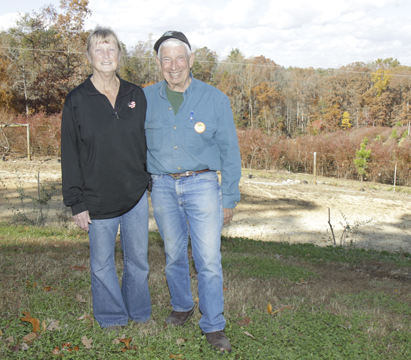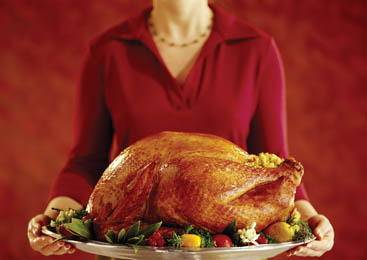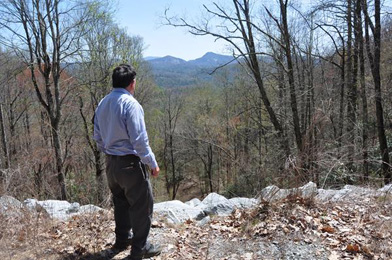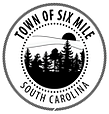Category Archives: Lifestyles
New Year food superstitions
 Grapes: Dating back to the early 1900s, people in Spain, Portugal, Venezuela, Cuba, Mexico, Ecuador, and Peru consume 12 grapes at midnight — one grape for each stroke of the clock. Each grape represents a different month, so if for instance the third grape is a bit sour, March might be a rocky month. For most, the goal is to swallow all the grapes before the last stroke of midnight, but Peruvians insist on taking in a 13th grape for good measure.
Grapes: Dating back to the early 1900s, people in Spain, Portugal, Venezuela, Cuba, Mexico, Ecuador, and Peru consume 12 grapes at midnight — one grape for each stroke of the clock. Each grape represents a different month, so if for instance the third grape is a bit sour, March might be a rocky month. For most, the goal is to swallow all the grapes before the last stroke of midnight, but Peruvians insist on taking in a 13th grape for good measure.
Cooked Greens: Cabbage, collards, kale, and
New Year traditions from around the world
Scarecrow burning — Ecuador
To banish any ill fortune or bad things that happened in the past year, Ecuadorians set fire to scarecrows filled with paper at midnight on New Year’s Eve. They also burn photographs of things that represent the past year, which leads us to believe that New Year is just a thinly veiled excuse for Ecuadorian pyromaniacs to set things on fire.
Round things — Philippines
In the Philippines New Year is about one thing and one thing only — cold hard cash. Hoping to
Keep your resolutions
As we prepare to usher in 2015, no doubt many of us have compiled a list of New Year’s Resolutions that we plan to enact the moment we open our eyes and our feet hit the floor on January 1.
Losing weight, getting in shape, quitting smoking, saving money, organizing and decluttering are all timeless, popular and laudable resolutions. The reason so many people give up on their resolutions is simple: change is difficult, and it requires constant practice.
Rome, as they say, was not built in a day. If you are serious about making lasting changes in your life this year, experts offer advice toward achieving your goals — whatever they might be.
1. Choose a Specific,
Realistic Goal
Every year, millions of adults resolve to “lose weight” or “get in shape” during the next year. Instead of selecting such an ambiguous and vague goal, focus on something more concrete and achievable. For example, you might commit to losing 5 or 10 pounds or running a 5K. Choosing a concrete, achievable goal also gives you the opportunity to plan exactly how you are going to achieve your goal over the course of the year.
2. Stick With Just One Resolution
While you may have a long list of potential New Year’s Resolutions, studies suggest that you should pick just one and focus your energies on it rather than spreading yourself too thin among a number of different objectives.
3. Don’t Wait Until New Year’s Eve
Planning is an essential part of achieving any goal. Experts suggest that you should spend some time planning out how you will tackle a major behavior change. You can start by writing down your goal, making a list of things you might do to achieve that goal and noting any obstacles that might stand in your way.
4. Start With Small Steps
Taking on too much is a common reason why so many New Year’s Resolutions fail. Dramatically slashing calories, over-doing it at the gym or radically altering your normal behavior are sure-fire ways to derail your plans. Instead, focus on taking tiny steps that will ultimately help you reach your larger goal.
If you’ve resolved to run a marathon, start out by going for a jog two or three times a week. Decide to take the stairs in lieu of riding an elevator. If you are trying to eat healthier, start by replacing some of your favorite junk foods with more nutritious foods. Maybe you swap one item of junk food for a healthier option. While it may seem like a slow start, these small changes make it easier to stick to your new habits and increase the likelihood of long-term success.
5. Avoid Repeating Past Failures
Another strategy for keeping your New Year’s Resolution is to not make the exact same resolution year after year. If people think they can do it they probably can, but if they’ve already tried and failed, their self-belief will be low. If you do choose to reach for the same goals you’ve tried for in the past, spend some time evaluating your past results. Which strategies were the most effective? Which were the least effective? What has prevented you from keeping your resolution in past years? By changing your approach, you will be more likely to see real results this year.
6. Remember That Change Is a Process
Those unhealthy habits that you are trying to change probably took years to develop, so how can you expect to change them in just a matter or days, weeks or months? It may take longer than you would like to achieve your goals, but remember that this is not a race to the finish. Once you have made the commitment to changing a behavior, it is something that you will continue to work on for the rest of your life.
7. Don’t Let Small Stumbles Bring You Down
Encountering a setback is one of the most common reasons why people give up on their New Year’s Resolutions. If you suddenly relapse into a bad habit, don’t view it as a failure. The path toward your goal is not a straight one, and there are always going to be challenges. Instead, view relapses as learning opportunities.
If you are keeping a resolution journal, write down important information about when the relapse occurred and what might have triggered it. By understanding the challenges you face, you will be better prepared to deal with them in the future.
8. Get Support from Your Friends and Family
Yes, you’ve probably heard this advice a million times, but that is because the buddy system actually works. Having a solid support system can help you stay motivated. Explain what your goals are to your close friends or family and ask them to help you achieve your objectives. Better yet, enlist the help of others by joining a group that shares your goal.
9. Renew Your Motivation
During the first days of a New Year’s Resolution, you will probably feel confident and highly motivated to reach your goal. Because you haven’t really faced any discomfort or temptation associated with changing your behavior, making this change might seem all too easy.
After dealing with the reality of dragging yourself to the gym at 6 a.m. or gritting your teeth through headaches brought on by nicotine withdrawal, your motivation to keep your New Year’s Resolution will probably start to dwindle. When you face such moments, remind yourself of exactly why you are doing this. What do you have to gain by achieving your goal? Find sources of inspiration that will keep you going when times get tough.
10. Keep Working on Your Goals
By February, many people have lost that initial spark of motivation that they felt immediately after making their New Year’s Resolution. Keep that inspiration alive by continuing to work on your goals, even after facing setbacks. If your current approach is not working, reevaluate your strategies and develop a new plan.
Consider keeping a resolution journal, where you can write about your successes and struggles. Write down the reasons why you are working toward your goal so that you can refer to them during times when you feel uninspired and unmotivated. By sticking with it and working on your goal all year long, you can be one of the few able to say that you really did keep your New Year’s Resolution.
The evolution and many faces of Christmas

Many people prepare for the arrival of Christmas months in advance. The first traces of wrapping paper and decorations arrive in stores as early as September, transforming the holiday into a much more secular celebration than its modest Christian beginnings.
Despite Christmas being an important date in the lives of today’s Christians, the holiday failed to gain prominent status until relatively recently. Research indicates that as late as the 19th century, Christmas was not even a legal holiday requiring a day off from work. That’s why 19th century readers of the classic Christmas tale, “A Christmas Carol,” were not shocked at Bob
Tidbits to put you in the holiday spirit
The holiday season has arrived, and millions of people across the globe will be celebrating Christmas with their families and friends. The following are some interesting tidbits to share with your loved ones this holiday season.
• Each year, more than three billion Christmas cards are sent in the United States alone.
• In 350 AD, Pope Julius I, bishop of Rome, proclaimed December 25 the official celebration date for the birth of Jesus Christ. Many historians and theologians have surmised that Christ
Happy environment, happy farm

Courtesy Caitlin Herrington/The Journal
Pictured with his wife, Ann, Happy Berry farm owner Walker Miller was honored recently as the Carolina Farm Stewardship Association’s Farmer of the Year.
The Happy Berry wins sustainable farming award
By Caitlin Herrington
Courtesy The Journal
cherrington@upstatetoday.com
SIX MILE — hose who have been to The Happy Berry in the height of summer to pick blueberries or blackberries know it’s easy to work up a sweat on the 20-acre farm.
But what many don’t know is that spot is, on average, nine degrees warmer than a half-mile down the road — and that’s just the way owner Walker Miller planned it.
Miller and his wife, Ann, have spent the last 35 years working to get their farm to produce crops year-round while interfering with the environment as little as possible. Choosing a plot of land less likely to freeze was just the first of many selective decisions, and their efforts were
Football Frenzy Extra – Palmetto State-ment

Kerry Gilstrap/Courier
Clemson senior defensive end Vic Beasley and the Tiger defense terrorized South Carolina quarterback Dylan Thompson all day Saturday. Beasley had two sacks and forced a fumble in his final game in Memorial Stadium.
Freshmen help Tigers put emphatic
end to Gamecocks’ rivalry streak
By Jonathan Gantt and Colby Lanham
Clemson Athletic Comm.
CLEMSON — Enough was enough for Clemson, and especially its seniors.
And three freshmen who don’t know what losing to South Carolina (6-6) is like did their part to keep it that way for at least another year.
After five straight years on the short end, Clemson (9-3) finally broke through and won the Palmetto Bowl by a 35-17 score on Saturday, bringing an end to a losing streak that kept many from realizing just how outstanding the program has been over the last several years.
New to the rivalry, quarterback Deshaun Watson (14-19 passing for 269 yards and four total
Thanksgiving Leftovers

Turkey day is over, but you still have enough food
to feed an army. Use these idea to help you get
the most out of your holiday.
By Olivia Fowler
For the Courier
ofowler@thepccourier.com
So the Thanksgiving feast has been eaten, the company has departed, the house is a shambles and you don’t feel like cooking.
You have options — freeze your leftovers in usable portions, go out to eat or recycle the leftovers into totally new meals.
Although it’s wonderful on Thanksgiving, nobody wants to repeat the same meal over and over
Back to School 2014

As the summer winds down, it’s time for parents and students to begin the transition back into school mode. The first day of classes in Pickens County is set for Aug. 19, but getting a head start on school year preparation is a key to success.
How to help kids transition back to the classroom

As a new school year draws nearer, parents can employ several strategies to help their kids readjust to the rigors of the classroom.
The dawn of a new school year is an exciting time. Kids may not want to say goodbye to days spent lounging by the pool, but such disappointment is often tempered by the prospect of returning to school with friends.
For parents, getting kids ready for a new school year is about more than updating their wardrobe or organizing carpools with fellow parents. Reacclimating kids to the routine of school after a relaxing summer is a significant undertaking, and the following are a handful of ways for parents to get a head start as the school year draws closer.
• Establish a routine over the last few weeks of summer. Summer vacations typically lack the structure of the school year, and that lack of structure can help kids unwind and
The grand mystery in Cashiers Valley

Photos courtesy Dr. Thomas Cloer Jr.
Dr. Thomas Cloer is pictured looking out over the wilderness of Whiteside Cove, where Hawkins went missing more than 80 years ago.
A well-known mountain preacher’s 1930 disappearance went unsolved for nearly two decades and gave rise to a phrase some still use today.
By Dr. Thomas Cloer Jr., Special to The Courier
I saw an obituary recently for Mary Hawkins Bryson of Cashiers Valley, N.C. It reminded me of a mystery that practically every resident of Jackson County, N.C., and many in Pickens and Oconee counties in South Carolina knew about early in the 20th century.
Mary Hawkins Bryson was the last surviving member of the family of Wade and Elsie Hawkins. Mary’s grandfather was the legendary Methodist preacher William Thomas (Tom) Hawkins.
Tom Hawkins was born before the Civil War, in 1856. He married Mary Emily Bradley in 1878, and they soon had a family of three boys and two girls. The Tom Hawkins household was a prominent family in Cashiers Valley and lived across the road from Cashiers Lake. At one time or another, the Hawkins family members were neighbors of both sets of my grandparents.
One son of Tom and Mary Hawkins was William Wade Hawkins. Wade married Elsie Monteith, and they and their family were neighbors of my mom and her family. Mom, my grandmother Bonnie Baumgarner, my step-grandfather Roy B. Baumgarner and Mom’s siblings, Fred Moody, Lucy Moody and Maxine Moody, lived just outside Cashiers Valley at the head of the Horsepasture River that flows into Lake Jocassee.
I remember my mom telling about Grandmother Bonnie making Elsie Hawkins a cake and apron for Christmas. While I can’t remember Wade Hawkins, as he died in the 1950s, I can remember one of Tom Hawkins’ youngest daughters. Her name was Genovieve Hawkins Wright, and everyone called her “Vee.” I knew her because she was the postmaster in the post office at Cashiers Valley. She was to play a major role in the mystery.
Even as a very small child, I can remember Mom and Dad talking about the grand mystery involving the Hawkins family. One evening, Tom went to find the family cow and return it to the homestead. When darkness arrived that evening — March 18, 1930 — and Tom, in declining health and 73 years old, did not return, the alarm went out to all the neighbors.
My dad was not yet a teenager when his neighbor’s disappearance began the mystery. Mom had not started elementary school in Cashiers Valley. She and Dad later married, moved away, and my brother and I were born. Our family then moved back to Cashiers, and the mystery still continued.
“Pull a Tom Hawkins”
Mom’s father died when she was three years old. My grandmother, Bonnie, married Roy B. Baumgarner. He was a huge gentle man, who, like many of the mountaineers of Appalachia, found moonshine whiskey to his liking. When the mountain dew had its effect, and my grandmother scolded Roy B. for indulging, he often said, “Bonnie, sweet dear, one of these days I just might pull a Tom Hawkins.” He never got the chance. Roy B. died young, at 53. What did he mean by “pull a Tom Hawkins?”
I have spent many hours trying to answer that question. I have traveled many miles, researched many documents and have done extensive interviews. My mom, Grace Moody Cloer, and her sister, Maxine Moody Kinsey, are two of the people still living from Cashiers Valley who were alive when the mystery began that March evening in 1930. At three o’clock that afternoon, Tom Hawkins went toward Timber Ridge below the dam of Cashiers Lake to retrieve the family cow. That was 84 years ago. My mom, who will be 90 years old on her next birthday, was just 5 years old when the mystery began. She remembers her stepfather leaving to help hunt for Tom.
Timber Ridge, below Cashiers Lake, leads to an incredible wilderness beneath Whiteside Mountain. Cashiers Lake is the beginning of the mighty Chattooga River that flows 57 miles through some of the roughest, wildest terrain left today in the Southern Appalachians. Whiteside Cove is an expansive wilderness area underneath Whiteside Mountain through which the Chattooga flows. Whiteside Mountain contains the highest precipices this side of the Rocky Mountains and is an incredible mountain of rock that can be seen for many miles from many perspectives around Cashiers Valley.
My dad’s sister, Ethel Cloer Mills, lived in Whiteside Cove for most of her life. I can remember with great fondness my visits to Aunt Ethel and Uncle Dallas Mills’ farmstead on the banks of the Chattooga below Cahiers Lake. I would often stay all day and help on the farmstead at planting time. I became familiar with the rugged, dangerous terrain very early in my life.
My dad first fished these turbulent waters in the 1920s and 30s. My brother, Nat, and I fished the Chattooga waters of Whiteside Cove from the 1950s to this 21st century, he more than I, because he had a home on Whiteside Mountain in the 80s and 90s. We caught all three species of trout there. We both remember the beautiful outside speckles and the salmon-colored meat of the beautiful native brook trout below Cashiers Lake dam, and the very rugged terrain downstream. We can readily understand why the mystery of the disappearance of Tom Hawkins continued for decades after he entered such a wilderness.
The Search Expands
Tom Hawkins was last seen alive in the Timber Ridge area below Cashiers Lake dam at approximately 5:30 p.m. in the afternoon of March 18, 1930. When daylight arrived the next day after Tom disappeared, almost every able-bodied man in Cashiers Valley was helping with the search. Tom was a mountain man, a woodsman, an avid hunter and fisherman. According to the newspaper of that day, The Jackson County Journal, Hawkins was familiar with the wilderness he entered, “perhaps better than anyone.” That same article mentioned his former hunting of rattlesnakes in the wilderness that he entered just before nightfall.
Nine days after his disappearance, according to a later article in the same newspaper, hundreds were still searching for the man. The searchers included men from Pickens and Oconee Counties of South Carolina, and from Macon County, Sylva, Glenville and Cullowhee, N.C., and the surrounding territories. At one point in the search, 400 men were combing the area, all to no avail. Hawkins was familiar with many small caves in Whiteside Cove, and the searchers thought these caves to be a logical place for him to take refuge from the harsh cold at night.
Life Goes On
Herbert Hoover was president of the United States when Tom Hawkins disappeared. After three years passed, Franklin Delano Roosevelt became president in 1933. Still, there was no hint of what happened to Hawkins. FDR introduced The New Deal and initiated the Work Projects Administration (WPA) and the Civilian Conservation Corps (CCC). Both assisted the poor of Southern Appalachia. The 21st amendment ended prohibition. In 1937, Look Magazine came on the scene. In 1939, President Roosevelt became the first U.S. President to make a speech on television at the World’s Fair in New York City. In 1940, Oldsmobile became the first car to have an automatic transmission.
My mom and dad left Cashiers for a day, and eloped, Mom being underage, to Walhalla, where they were married in the house of the Justice of the Peace, a Mr. Gillespie. It had been 10 years since the mystery began when they married in 1940, and still there was no clue as to what happened to Tom Hawkins.
Our family moved to Clay County, N.C., near Shooting Creek, with Gennett Lumber Company. Roosevelt was elected to a record third term as president. In 1941, there was the attack on Pearl Harbor by the Japanese. My brother, Nat, was born that year. In 1945, I was born, and three days later on April 12, 1945, Roosevelt died at Warm Springs, Ga.
In 1945, when vice president Harry Truman took office after Roosevelt’s death, he ordered that atomic bombs be dropped on Hiroshima and Nagasaki, Japan. In 1947, Meet the Press appeared on American television. In 1948, The Texas Star Theater, starring Milton Berle, was the first major successful program of that type on American television. Also in 1948, our family moved back to Cashiers Valley from Clay County.
After all these landmarks in American history, 18 years and three months after the well-known Methodist minister’s disappearance, there was a major development in the mystery.
Major Development
On June 18, 1948, two mountaineer loggers, the White brothers, working in a remote section of Whiteside Cove under Whiteside Mountain, found what they thought might be a human skull. The White brothers took the find to a medical doctor in Cashiers, who said it was indeed a human skull. Ernest White and his brother, unnamed in documentation, then returned to the very dense, remote laurel thicket in Whiteside Cove where they had found the skull and began to rake away leaves.
There, to their amazement, was a skeleton, intact, even with shoes still on the feet. There, also, was a billfold, pocketknife, watch and a set of false teeth. There was a tree of good size that had grown between the leg bones, and the skeletal remains were all there.
The items found were taken to Genovieve Hawkins Wright, the postmaster daughter of Tom Hawkins. Genovieve immediately identified the items as belonging to her father. After 18 years and three months, the mystery of what had happened was solved — to an extent. The skeletal remains were found on a Thursday. To help the community attain closure, a funeral was held in Cashiers Valley United Methodist Church on the following Sunday, June 21, 1948, with Rev. W.N. Cook officiating.
My mom and Aunt Lucy Moody Moore were in attendance. Tom Hawkins was then finally laid to rest in Cashiers Valley Zachary Cemetery in the Chattooga Woods area near High Hampton Resort. A huge marker is erected there in the lower cemetery to Rev. W.T. Hawkins, 1856-1930, “The Good Shepherd of the Hills.” His remains were actually laid to rest in the upper cemetery near his family. His tombstone there is clearly marked.
Conclusion
Well, what does it mean to “pull a Tom Hawkins?” There are still many questions. One question still in my mind is not “What happened?” but “Why?” Speculation has been rampant ever since Genovieve Hawkins Wright identified the items. Some have said Tom Hawkins’ father died in a similar fashion. There is some credence to the theory, I think, that Tom Hawkins wanted to die in this fashion.
I, too, am a woodsman, hunter and fisherman, and often find myself alone and many miles from any human activity. I must say in complete honesty that I find being alone in this manner enthralling and invigorating. It inexplicably gives me an emotional high unequalled in my human experience. I really can and do commune best with The Great Spirit during these times; I am genuinely doing what I love. I also believe a true wilderness psyche helps put any silliness and pettiness that may occur in our daily mundane lives in much better perspective.
My dad’s brother, W.A. Cloer, Sr., also a mountain minister of fame, died alone while hunting in a wilderness area in the Nantahala Mountains of Macon County, N.C. A search party, led by his son, W.A. (Buddy) Cloer, Jr., was successful in finding his body. So, I know my experiences into wilderness make my wife and family feel most uncomfortable. They fuss at me regularly now as I go alone into the most rugged, remote wilderness areas to fish or hunt. I also know that my family, friends and other loved ones are those I must consider in this aspect of my being; I understand that. Their feelings of angst about my possible future demise were enough for me to go ahead and make a covenant of sorts with them.
“OK! I promise!” I told them. “I won’t ever — intentionally — pull a Tom Hawkins.”
Dr. Thomas Cloer Jr. is Professor Emeritus, Furman University. He received his undergraduate degree with honors from Cumberland College in Kentucky, his Master’s degree from Clemson, and his Ph.D. from the University of South Carolina.



























